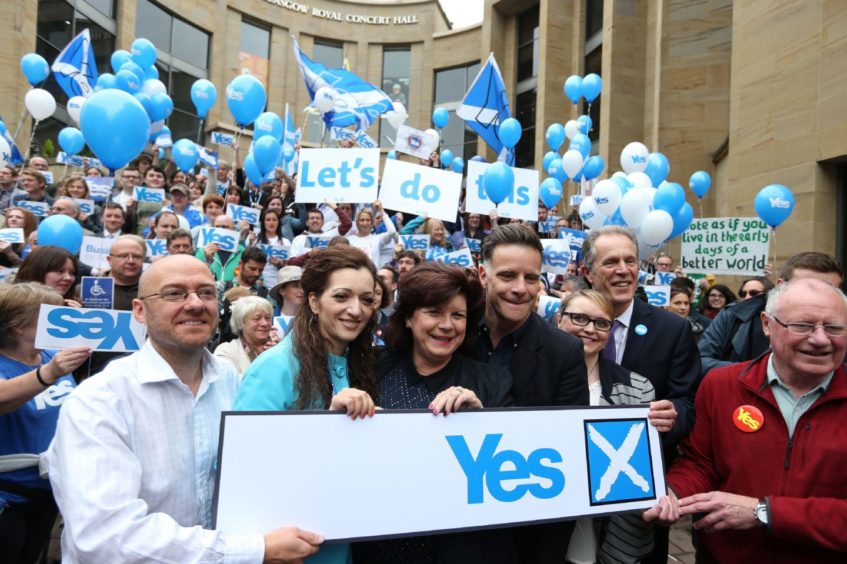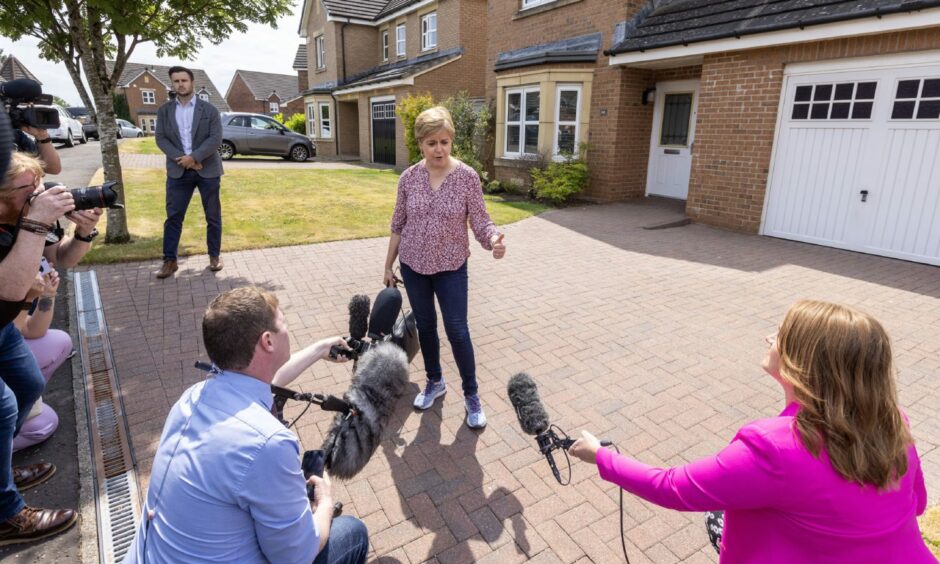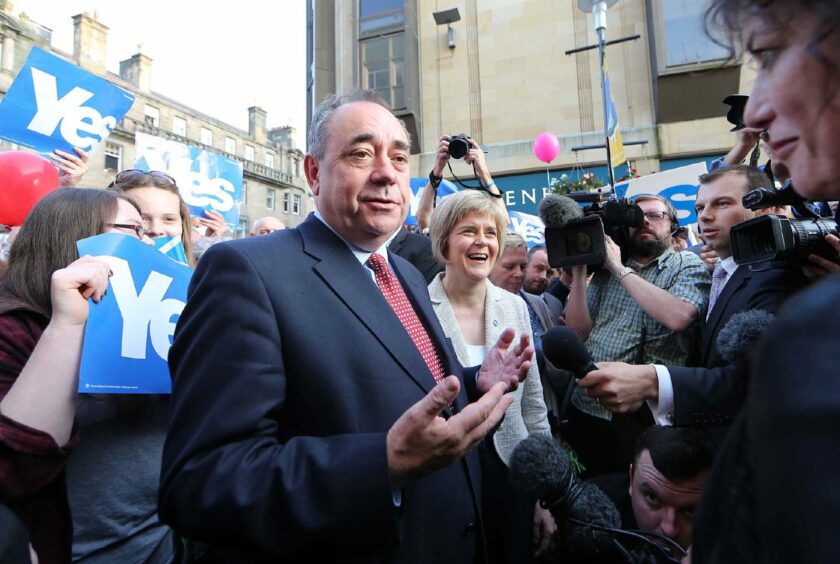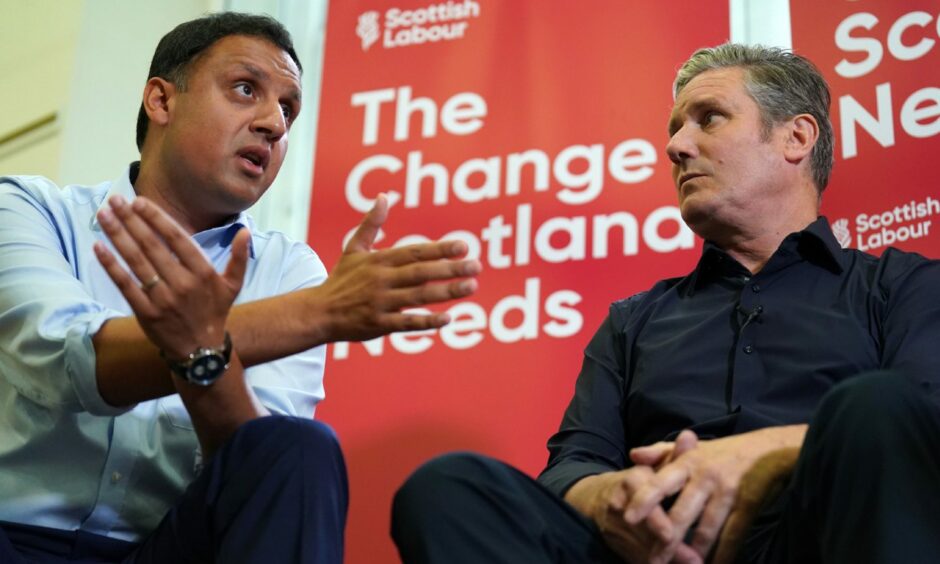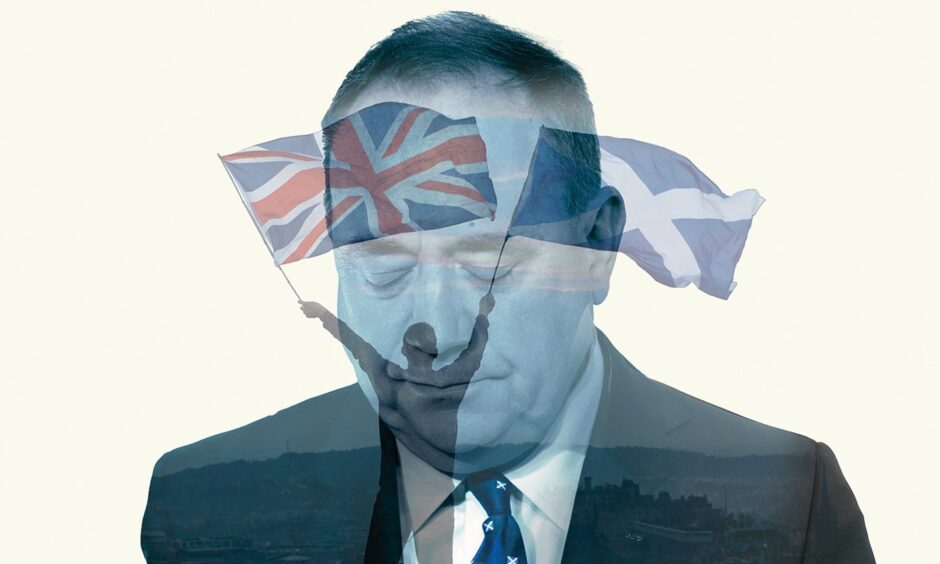
As we head into 2024, thoughts will turn to the 10-year anniversary of a seismic Scottish independence referendum that has shaped and driven our national politics.
A decade on, is Scotland any closer to becoming an independent country – and is Humza Yousaf, the self-styled First Activist, the person to take Yes supporters over the finish line?
There are two key differences between the political landscapes of 2014 and 2024 that campaigners and polling experts say will be pivotal in any future vote on breaking away from the rest of the UK.
The first is that support for independence is sitting significantly higher than it was ten years ago, at around 49% when ‘don’t knows’ are excluded.
The second is Brexit, where independence supporters argue Scotland was dragged against its will out of the European Union despite voting overwhelmingly to stay.
But campaigners face huge challenges in capitalising on either of those points, with the UK Government continuing to rule out any possibility of a new referendum being held.
In November last year, the UK Supreme Court ruled the Scottish Parliament cannot authorise a vote without Westminster’s permission.
That has left Yes supporters arguing over the best way to win a plebiscite rather than making a case to the wider public.
Unknown territory
A poll released on the week Blair Jenkins became chief executive of Yes Scotland in the summer of 2012 had support for independence as low as 27% – although average polling sat around 30% at the time.
A decade later, Jenkins says the movement is stuck in “unknown territory” with, in his view, a mandate for a new referendum already being won at the 2021 Scottish Parliament election with the return of a majority of pro-independence MSPs.
He believes the only way to win agreement for another vote is to “shame” whoever is in government at Westminster by moving polls towards a sustained majority for independence.
Jenkins said: “Clearly, we would start a new referendum from a much stronger position.
“Also, and I think this is a really important point, is that what is available now is a compelling reason for independence of a kind that wasn’t there 10 years ago.
“You could put together a very strong case but there wasn’t one thing you could point to that demonstrated why we need to be independent.
“I think Brexit is that reason. It is no longer possible to be both in the UK and the EU so there is a choice to be made there.”
SNP woes a stumbling block
Veterans of the 2014 campaign point to turmoil within the SNP – the primary vehicle for gaining independence – as a stumbling block that has prevented any real discussion from taking place on how to win that sustained majority support.
A police investigation into the party’s finances that has seen both Nicola Sturgeon and her husband, former SNP chief executive Peter Murrell, questioned by police will drag on into 2024.
One senior figure described how the probe has made it impossible for Humza Yousaf and others in the independence movement to move forward.
They said: “There is a limit to how much progress can be made on independence while the police investigation remains unresolved.
“If you’re going to come out with an all singing, all dancing raft of policies or strategy, you might want to wait until you are able to draw a line under that.
“You’d be fighting some pretty strong headwinds at the moment.”
Alex Salmond, the former first minister who led Scotland to the 2014 referendum, claims the country has moved politically backwards since then.
The former SNP leader went on to form a new party in Alba after a split with successor Nicola Sturgeon that sent shockwaves through the independence movement.
Salmond said: “The transformational impact of the referendum galvanised an electorate into further positive votes for progressive change.
“However, instead of forging ahead to independence, Scottish politicians have dithered, delayed and finally dissipated the impetus for progress.
“It has been a decade of drift to the great detriment of the Scottish people.”
He added: “The bedrock of Scottish Government competence, which was the foundation on which support for independence grew, has been badly eroded, while the SNP have given up the ghost on presenting a coherent independence strategy.
What has polling found?
Polling suggests some independence supporters may have lost faith in the SNP but they have not given up on the wider political movement.
Heading into October’s SNP conference, the party’s support at Westminster stood on average at just 36%, the lowest level it had been since the September 2014 referendum and nine points below the party’s tally in the 2019 UK election.
It was polling at around 45% at the beginning of the year but this had slipped to around 38% by the time Yousaf won the leadership contest to replace Sturgeon.
The arrest and subsequent release of the former leader was followed by the further two-point drop down.
Polling expert Sir John Curtice says the party’s internal strife has allowed those opposing independence to duck out of the debate.
He said: “The SNP’s political difficulties, amongst other things, have made it difficult to get on the front foot in terms of getting the independence debate started.
“Meanwhile, because support for independence is still somewhat below 50%, Unionists can still afford to say the referendum was supposed to be a once-in-a-generation thing.
“If the SNP and the wider nationalist movement were in a position to get the debate started and to move the opinion polls, then at some point Unionists would have to stop arguing about process and have to argue about substance.
“But we’re nowhere near that.”
An uncertain future
Curtice believes the next referendum will be fought on the issue of membership of the European Union, with Brexit meaning Scots will need to choose between remaining in the UK or making moves to re-join the trading block.
When any such referendum will take place is far from clear.
Labour is being talked up as the likely winner of the next general election but leader Sir Keir Starmer has ruled out transferring powers to Holyrood for a new vote to be held.
Would that resolve hold if the SNP had the necessary seats at Westminster to make him prime minister but demanded a referendum in return?
A Labour victory next year would also have fascinating implications at Holyrood that could help shape the future fortunes of independence-supporting parties.
A win for Keir Starmer would force Scottish Labour to defend the record of the UK Government – an interesting prospect given the majority of former Yes voters who have abandoned the SNP since 2014 have moved to Labour.
What is far easier to predict is that the independence debate is not going away any time soon.
The relationship between age and support for separation is stronger now than it was in 2014, in part because of the Brexit vote, with graduates now more likely to be in favour than not.
As Scotland looks back over a decade in politics shaped by the independence question, it appears almost certain that it will not be the last.

